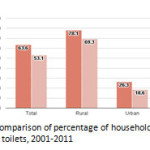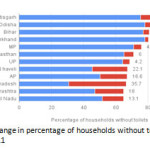IRG Systems South Asia Pvt.Ltd. (IRGSSA), based out of New Delhi. is a professional management consulting organisation in the domain of Environment, Energy and Natural Resources since 2001 (www.irgssa.com)
IRGSSA requires a NABET’s approved Functional Area Expert for the Meteorology, Air Quality Modeling and Prediction on the full time or on empanelment basis. Essential qualifications and experience is given below
a. Educational qualifications specific to functional area
Engineering Environmental / civil / chemical
Or
Master’s (post graduate) degree in Meteorology / Environmental Sciences / Environment Management / Environmental Studies / Industrial Pollution Control / Physics / Chemistry / Mathematics / Statistics / Atmospheric Sciences and the like.
b. Experience specific to functional area must include:
-Developing micro meteorological data for use in modeling
-Collecting and using secondary data on meteorology like cloud cover, inversion related data, mixing heights etc., for modeling.
-Application of relevant air quality models in prediction of dispersion of pollutants, plotting of isopleths of GLCs representing incremental pollution levels, worst case scenarios on suitable maps showing both, the sources of pollution as well as the environmentally sensitive receptions.
The models used should be able to address source to receptor scenarios for point sources, area sources and line sources. The models should also conform to the requirements of CPCB.
The following are the additional requirements from the expert:
-Adequate knowledge of EIA legislation process in India.
-Contribution to EIA documentation.
-Understanding of policies, guidelines and the legislation specifically related to air pollution.
- Contribute to other Environment, Energy and Natural Resources related projects of IRGSSA
c. Training (preferable)
Specialized course / training on air quality modeling, air pollution meteorology, atmospheric sciences and impact prediction.
IRGSSA is an equal opportunity employer. However, preference would be given to candidates who could join as soon as possible.
Interested Experts can email CV to irgssa@irgssa.com or contact on 011-4597-4597

